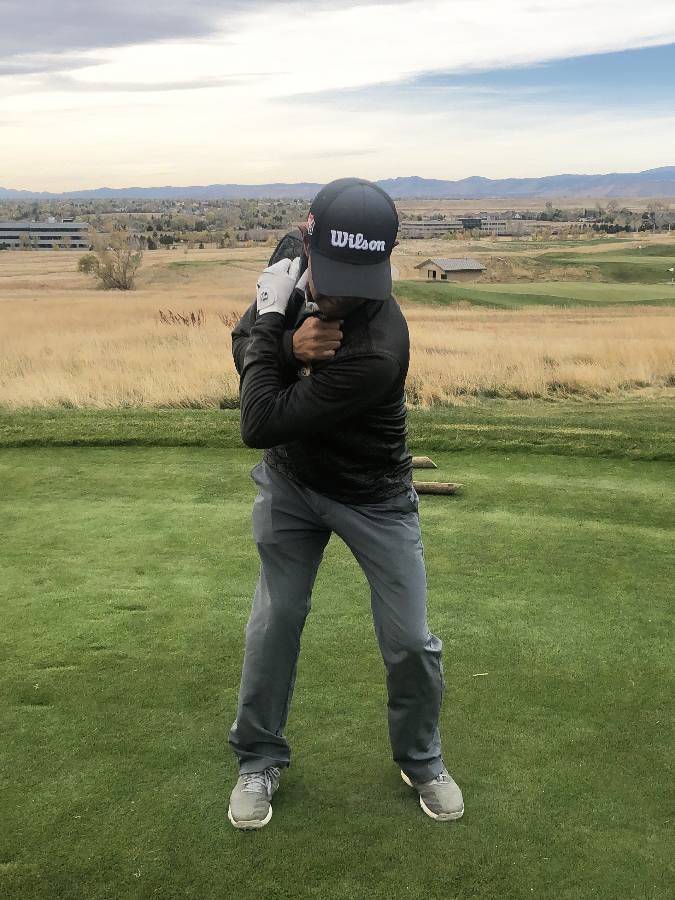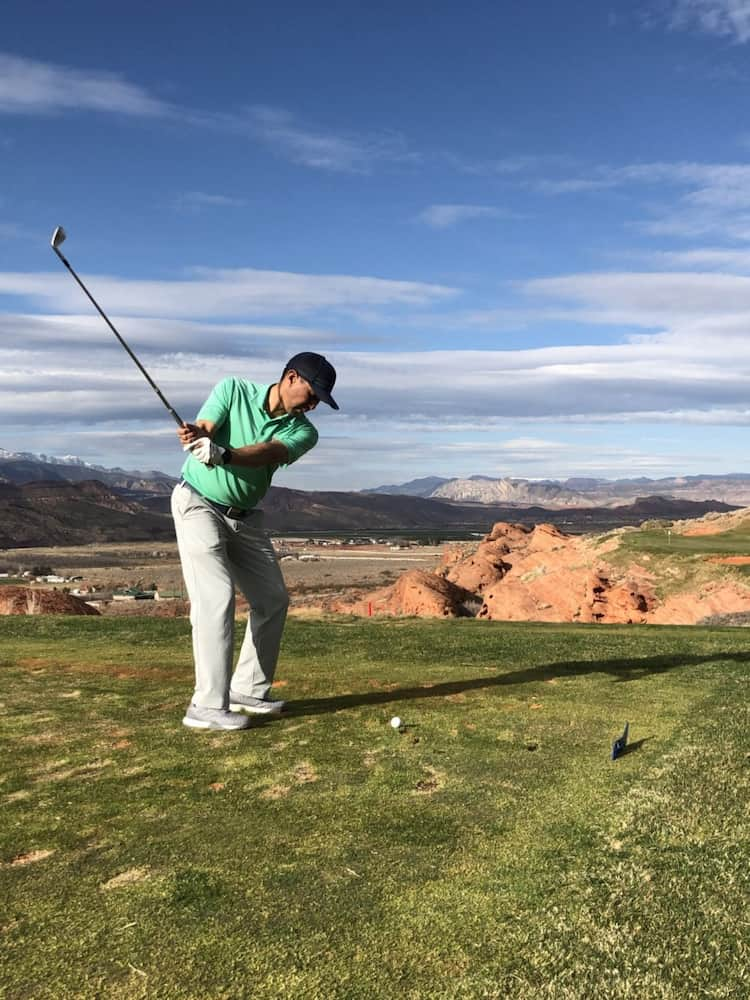Good ball strikers are always working on a fundamentally sound backswing so they can make their downswing much easier. There are so many body parts, components and proper sequencing that you have to feel all within a second during the backswing. I’ll walk you through some fundamentals that are needed to create the natural backswing with your body that will give you consistent ball striking and to maximize clubhead speed and power. If you can master a consistent backswing, you’re well on your way to swinging like a golf pro!
The goal of a proper backswing is to transfer weight to the trail side of your body. All while swinging a golf club of various lengths in perfect sync. Let’s break this down to give you a better understanding of how the backswing can help you become a better ball striker.
To understand the overall sequence of the back swing, we want to create a chain reaction starting with..
- Clubhead/Golf Club
- Hands/Arms
- Shoulders
- Upper Torso
- Hips
- Legs
- Feet
Takeaway
The takeaway is how you start your swing when taking the golf club back. This small and easy movement in your golf swing is absolutely important. If done properly, it can jump-start more body rotation, promote a consistent tempo and more importantly raise your potential for a more powerful swing. We need to start off the proper way so it can lead to other parts getting in sync.
Loosen the Grip
There’s only two ways to take the club away: Shoulders or Hands. Most players tighten their grip when they pull back their club, which results in an unnecessary wrist hinge that prevents a proper body turn. You can still control your club with a looser grip. (A looser grip will also allow you to leverage momentum on the downswing, but we’ll touch on that in my Downswing article.)
Use your Shoulders
Using the bigger part of your body as a lever will be more beneficial than using your hands or arms. The shoulders can also lead other parts of your upper body to rotate since it is physically connected to them. We’ll dig into this deeper in the next (Upper Body Rotation) section.
Stay on the Target Line
When bringing the golf club back, make sure the clubhead stays on your target line at takeaway. It will most likely stay on this line until it reaches your trail foot or our next step in the backswing.
Upper Body Rotation
I explain to my students that how you take the golf club away is similar to drawing an arc/circle. In golf, we need a wide arc for many reasons and need to do so with our shoulders. The common fault is creating this arc with your arms, wrists and hands which can cause so many problems that will deter you from a good body rotation over the golf ball.

Shoulders being a focal point
Keeping your shoulders loose at setup can promote the correct rotation in the backswing. The reason is that we have the rest of the upper torso that needs to follow and be effective in rotating so our back is facing more at our target and getting our weight transferred and stored properly. If you do this correctly, it will feel more comfortable not involving your hands, arms, or wrists.
- Feeling your right shoulder high during the backswing can help with this.
- Rotate your upper body right away after the takeaway. This will feel like you will arrive at the top of your swing earlier.
- Wrist angles won’t drastically change from when you started
Rotate your head
A slight rotation of your head away from the ball during the takeaway will help you feel comfortable and promote your rotation. Your neck will not move but a slight tilt in your head behind your golf ball can give you the assurance of rotating properly. Take a look at the 2020 Masters Champion, Dustin Johnson’s backswing and notice where his head starts to where it is at the top of his swing.
(image of DJ’s swing)
Feel the Weight
A solid takeaway should result in a good amount of your weight transferred to your trail leg. By the time your hands get to hip level, you should already have a good amount of weight stored in that trail leg.
- Keep Arms out of it – When your hands and club reach hip high, your lead arm will stay fairly straight while the trail arm will stay bent as is. You will look extended because of the rotation as the shaft of your golf club will slightly be angled up from parallel. If you use your hands or wrists too early, the golf club will be more upright and look less extended. You lead arm should be pointing at your target at hip level
- Clubface – The clubface will start opening caused by the rotation of the shoulders and torso.
- Club Plane – If the clubface opens up, the shaft will become flatter closer somewhere around a 50-60 degree angle.
Releasing the Club
After a one-piece takeaway with your shoulders and torso, we need to let the club release by letting your wrists hinge. Your grip pressure should be at the point where you still have a firm grip of the golf club but loose enough to allow the weight of the clubhead dictate the release. That release will result in the clubhead moving further up/around without the shoulders or hips continuing on.
Let the Clubface open
- By using our shoulders as a lever, we will create that arc by slightly opening our body position so your clubface needs to be in an open position also. This will allow your hands and wrists to naturally release the clubhead.
One-handed Drill
- Try gripping the golf club with your trail hand only and create that takeaway. You should feel the clubhead release when the grip of the club slightly comes off the palm of that hand.
Lower Body Rotation
This last part of the backswing is vital in setting up the downswing and creating an easier transition. We want to set up your body and club position in a way we can smoothly let the downswing happen naturally and consistently so we can produce a reverse sequence from our backswing. But before we discuss the transition or downswing, we have to finish off the backswing by using our lower body.
Forward Leg
You want to feel the forward leg knee slightly bend towards the golf ball right before you get to the end of your backswing. This means that some weight will be lifted off that leg’s heel and more pressure put on the ball of the lead foot. This will help you complete your full body rotation because your forward shoulder is completely under your chin. It will seem like you screwed your body into the ground because of the rotation throughout your body.
Tuck your Trail Hip
In order for our swing to feel balanced with a good rotation, we need to make sure we feel loaded up and store most of our weight on the trail side of our body. A good rotation will create a good hip turn so when this happens you will feel that trail hip open up towards your back or glut. We want this to happen without over-rotating the hips so tuck your trail hip back while keeping that trail leg bent.


